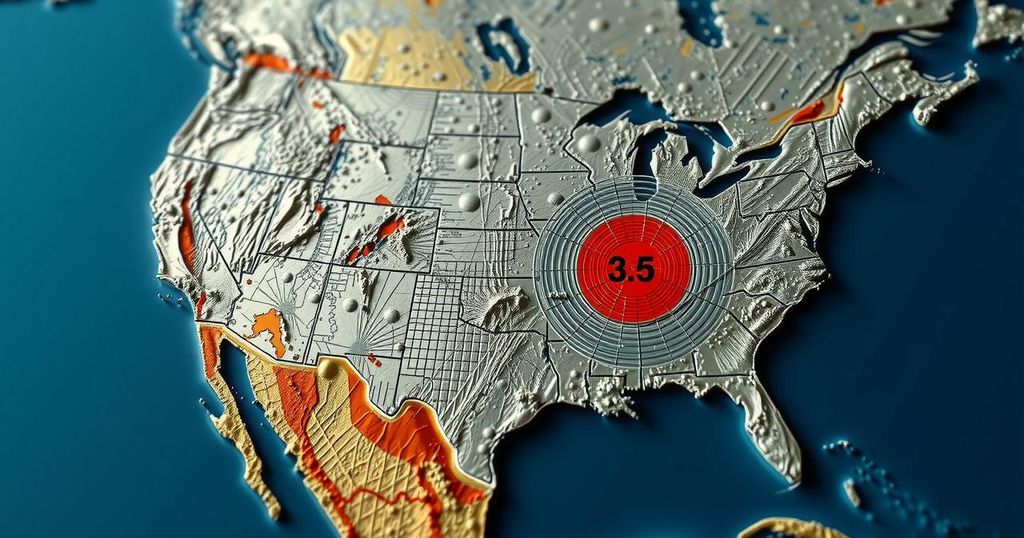A series of earthquakes occurred across the globe, including a significant 4.4-magnitude earthquake in California on November 7, following earlier tremors in Greece and Hawaii. These seismic events reflect ongoing geological instability and stress the importance of monitoring and preparedness in affected regions.
On November 7, a 4.4-magnitude earthquake struck Borrego Springs, California, as reported by the United States Geological Survey (USGS). This seismic event occurred at a depth of approximately 9.8 kilometers and garnered 257 reports from individuals who felt the tremor. This incident followed a series of notable earthquakes that unfolded just days prior in various locations, including Greece, Hawaii, Chile, and Missouri. The recent seismic activity across multiple regions has drawn attention. Just two days before the California earthquake, a 4.4-magnitude earthquake shook Chalandrítsa, Greece, occurring at a substantial depth of 82.3 kilometers. This earthquake was linked temporally to a 4.8-magnitude quake in Pāhala, Hawaii, which occurred on the same day. Remarkably, Hawaii’s quake followed a 3.3-magnitude quake in Anza, California, reported on November 4, further illustrating a pattern of tremors in quick succession. On the preceding Sunday, multiple earthquakes triggered concerns, including a 4.3-magnitude earthquake in La Serena, Chile, and a 3.7-magnitude earthquake in Steele, Missouri. Both these seismic events occurred after a significant 5.3-magnitude earthquake that rattled Néa Poteídaia, Greece. Notably, these findings reveal an intriguing connection between global seismic activities over a brief period. Moreover, the week preceding the November 7 earthquake was marked by significant tremors, beginning with a prominent 6.0-magnitude quake in Oregon on October 30, followed by several smaller quakes in California, including two 3.2-magnitude quakes in Lompoc, both occurring at minimal depths. The pattern of these quakes emphasizes the region’s geological instability and the necessity for preparedness in seismically active areas.
The context surrounding earthquake reports often highlights the geological volatility of various regions. Seismologists closely monitor these events, as they can provide crucial data regarding tectonic shifts and fault line activities. The United States Geological Survey plays a vital role in disseminating information about earthquakes and their impacts, allowing communities to understand trends and prepare for potential hazards. This recent spate of earthquakes across diverse locales underscores the unpredictable nature of seismic activity.
In summary, the recent sequence of earthquakes across California, Greece, Hawaii, Chile, and Missouri exemplifies the unpredictable nature of seismic activity worldwide. These events highlight the importance of ongoing monitoring by organizations like the USGS, which provides vital information that can help communities prepare for future seismic events. As the geological landscape continues to shift, staying informed remains essential.
Original Source: 1190kex.iheart.com






